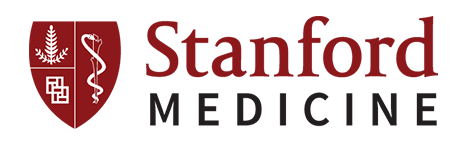





The Treatment Format Copy
Cue-Centered Therapy consists of 15 sessions organized into four phases.
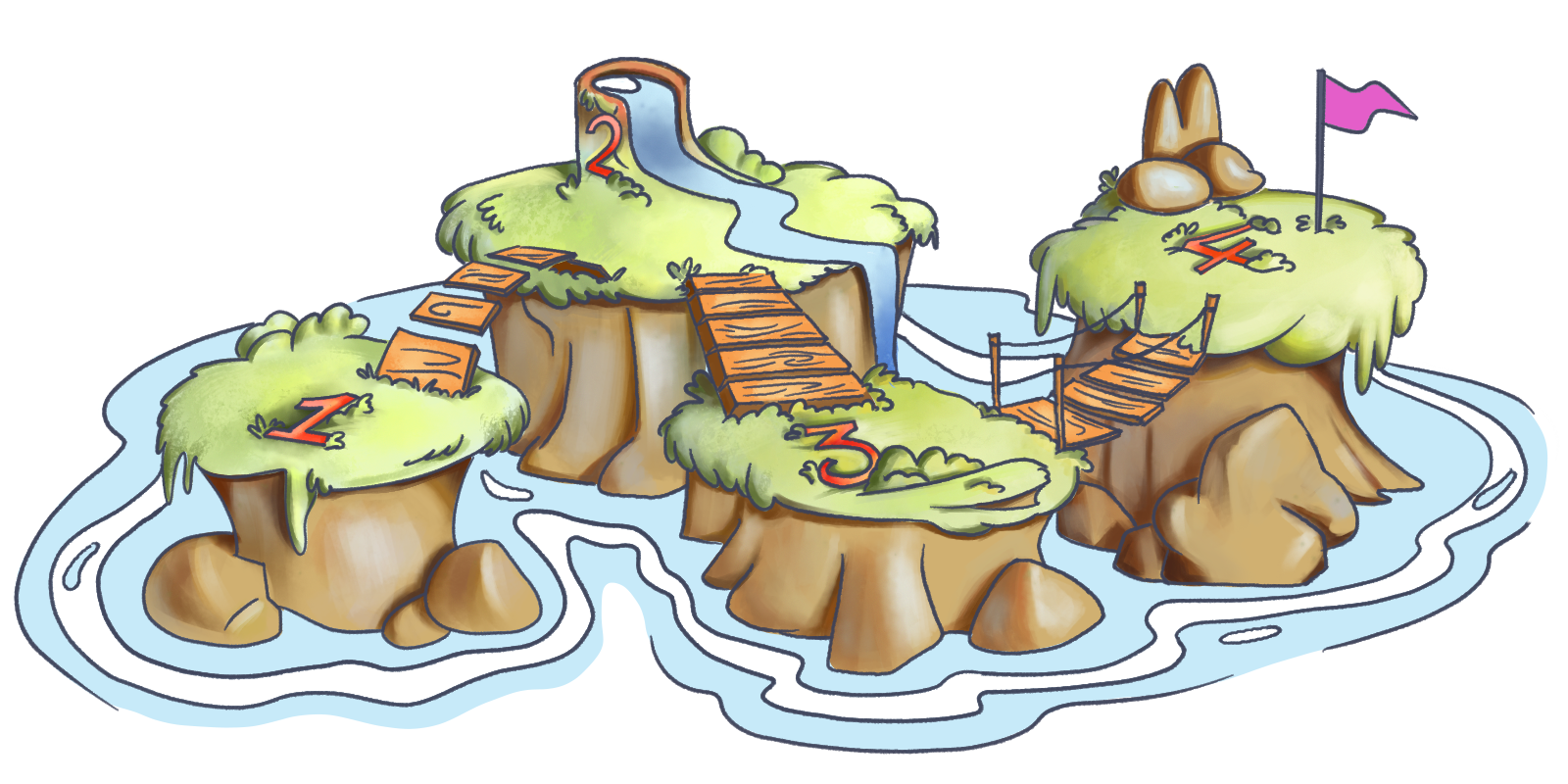
Describing this structure in Session 1 helps the child and caregiver know what to expect throughout the therapy.
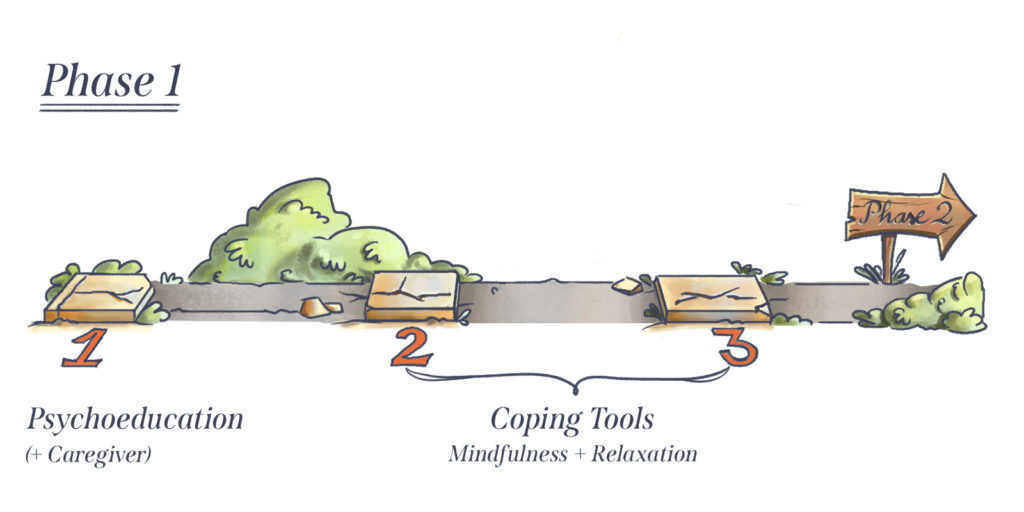
Phase 1 provides the child and caregiver psychoeducation on stress, normal stress responses, PTSD, and cues. Coping tools are also introduced and practiced, in session and at home.
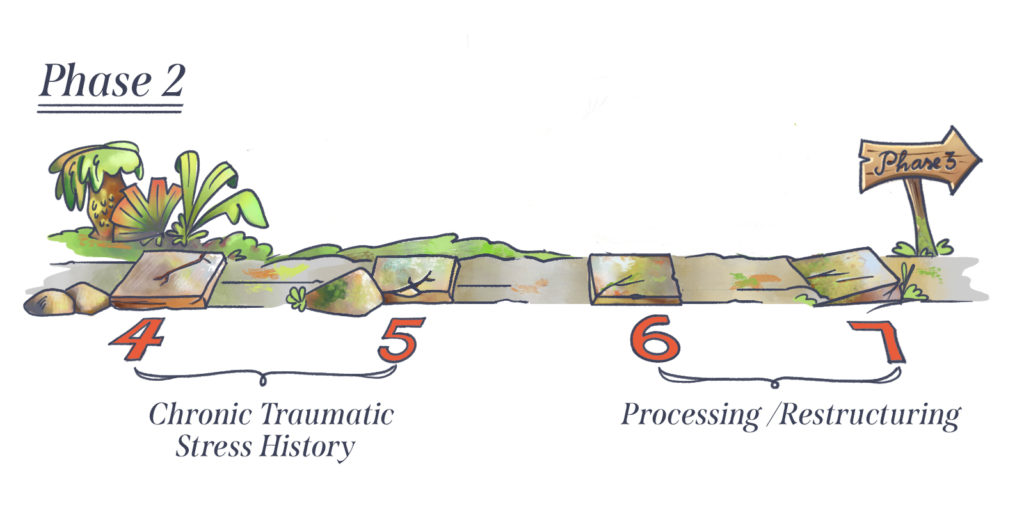
During Phase 2 (Sessions 4–7), the therapist helps the child build a life timeline to place traumatic events in the context of their entire life. The child also narrates their experiences of trauma. The therapist identifies emotions, cognitive distortions, cues, and memory gaps throughout the story. The therapist then helps the child process their experiences and restructure cognitive distortions identified in the story.
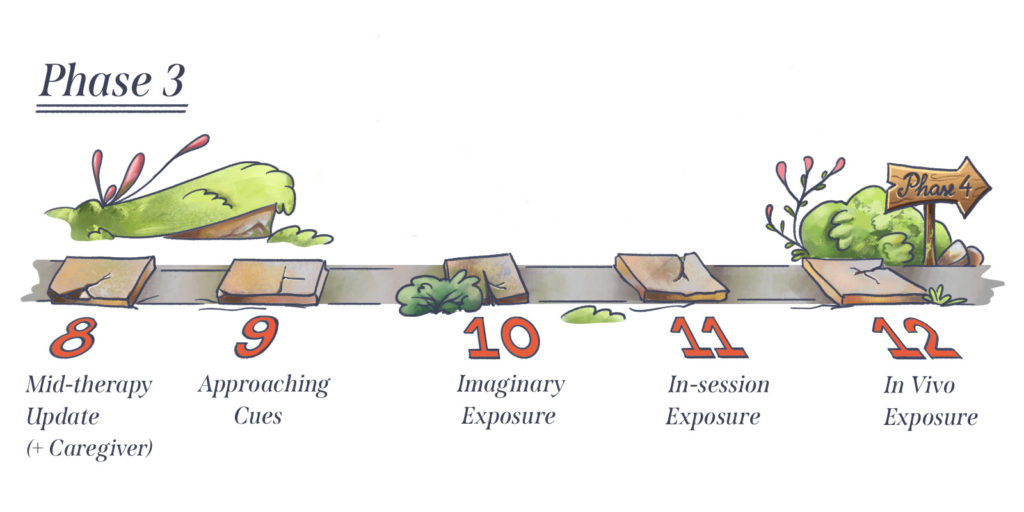
Phase 3 (Sessions 8–12) focuses on exposure to the identified cues using the coping tools that have been introduced in Phase 1. The exposure is practiced in gradual steps starting with preparation followed by imaginary, in-session, and in vivo exposures.
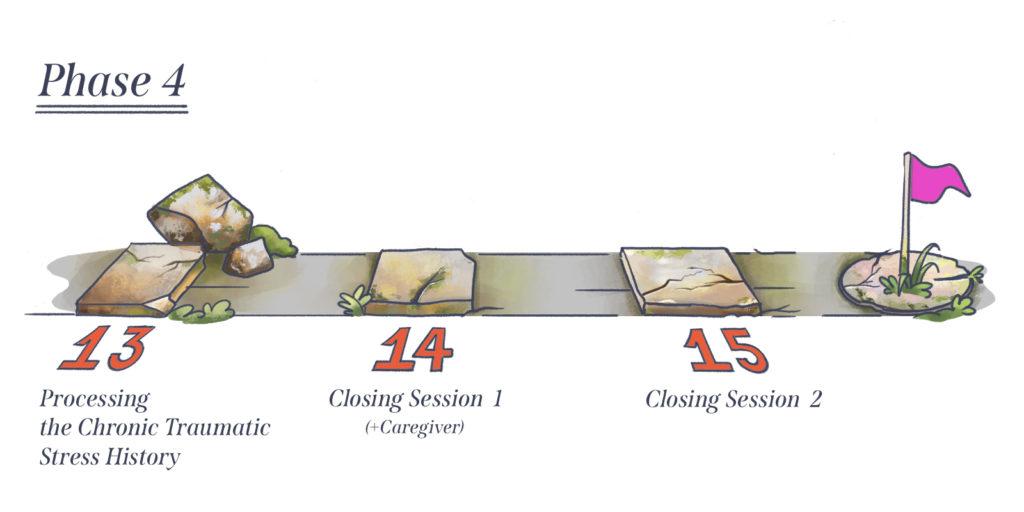
In Phase 4 (Sessions 13–15) the child integrates skills learned to revisit their trauma experiences. The therapist, child, and caregiver work together to ensure the sustainability of treatment benefits, and celebrate the therapeutic work.
